My race efforts this year went mostly as intended, yet not necessarily as expected. The more I run, and especially race, the more I learn about myself. I’m not talking about performance alone, but more so mindset or psychology. Every time I take on a new challenge, typically in the form of a greater distance trail race, I discover more about my personality, how I handle adversity and perseverance, and what I ultimately value most. The Mountain Lakes 100 mile race, my debut at that distance, solidified several traits I thought were core to my being. It also surprised me with a few unexpected ones. The emphasis of this report is on the Mountain Lakes 100 race, but before I share that experience I will give a recap from each of 2018’s preceding races.
YAKIMA 50K
The first race of the season. From this race I aimed to continue building upon my pre-established training regime until the end of the season. That said, the race was still a race, and I had no intentions of treating it as a training run. I probably should have, however, because it chewed my ambitions up and spit them out. It was a rough race to start the season off with, and I left it with a torn meniscus. The year’s strategy was off to a poor start. Read the full report from this race here: http://ecentdecent.com/yakima-skyline-50k-2018-race-report/
MARY’S PEAK 50 MILE
While I went into the Yakima race with high expectations, a very competitive attitude, and a 70 mile weekly running base, I went into Mary’s Peak in quite the opposite manner. The high milage weeks were exchanged for hours of strength training and physical therapy. Due to my torn meniscus I honestly didn’t think I would even attempt the race. It should have been my first official DNS (Did Not Start). My therapist Paul from Therapeutic Associates surprised me greatly, however, when he encouraged me to go for it. At his suggestion I did just that, and was glad I did. It proved to be an incredibly diverse course ranging from jeep roads, coastal single track, alpine terrain, cross country travel, and even some stretches passing through logging zones (not exactly roads). It was a very fun race, took place on my birthday, and to my astonishment I won it, besting the previous course record. The experience felt redemptive.
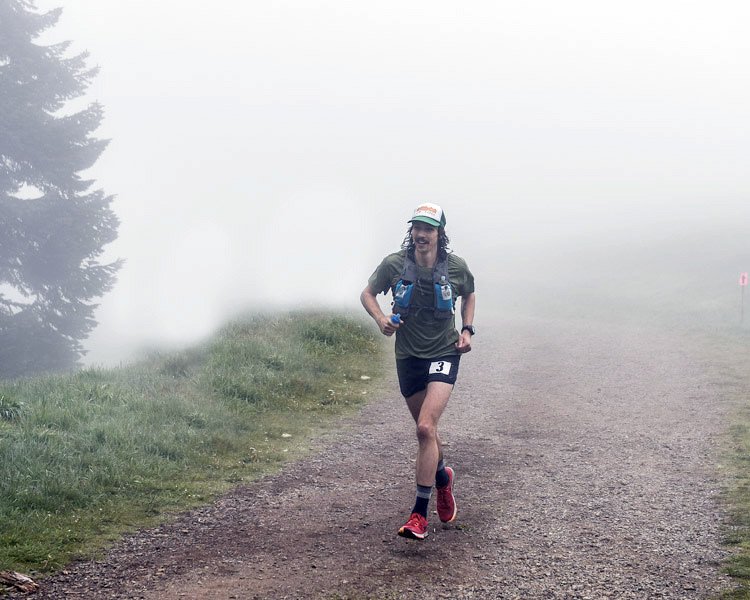
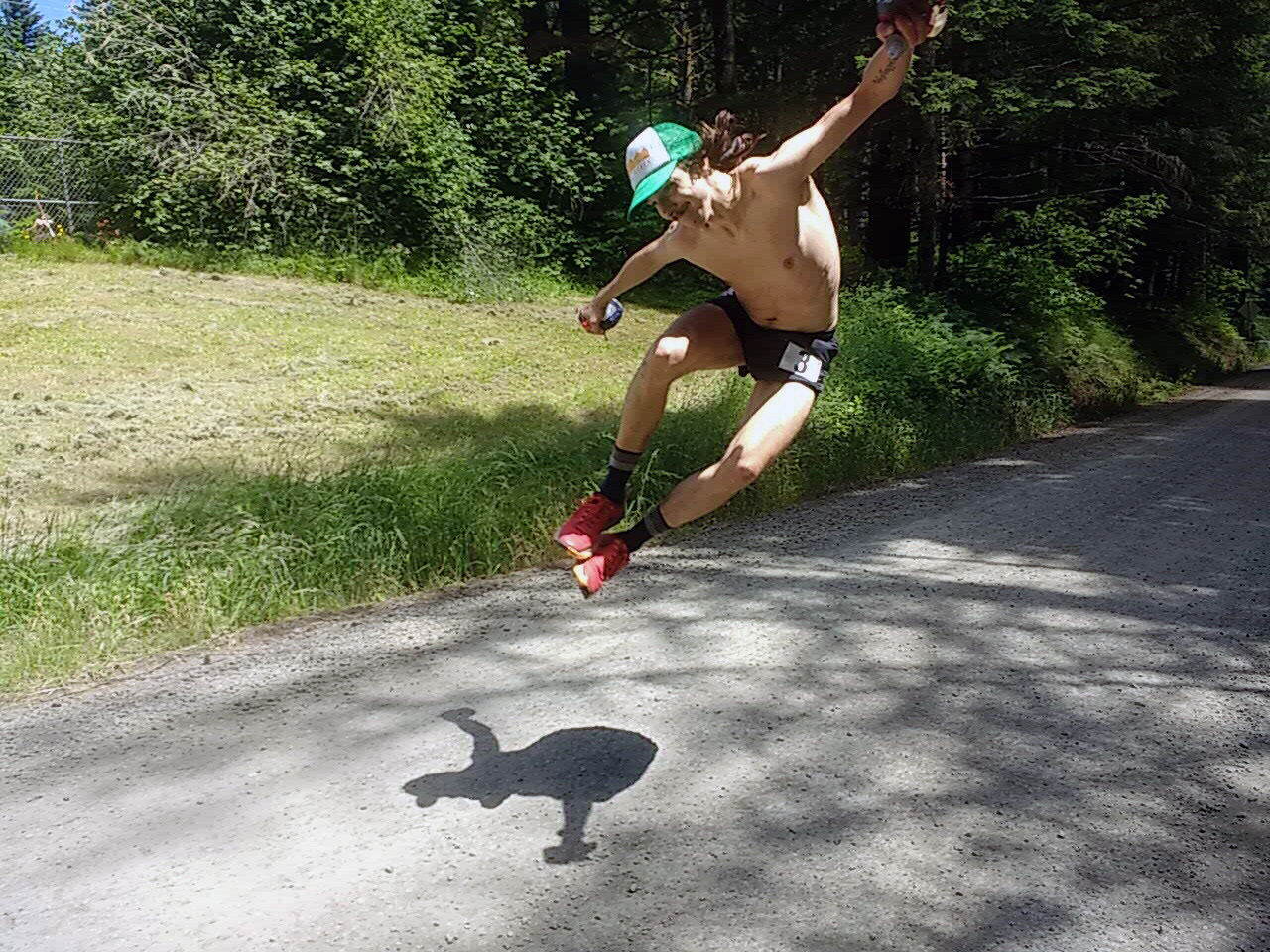
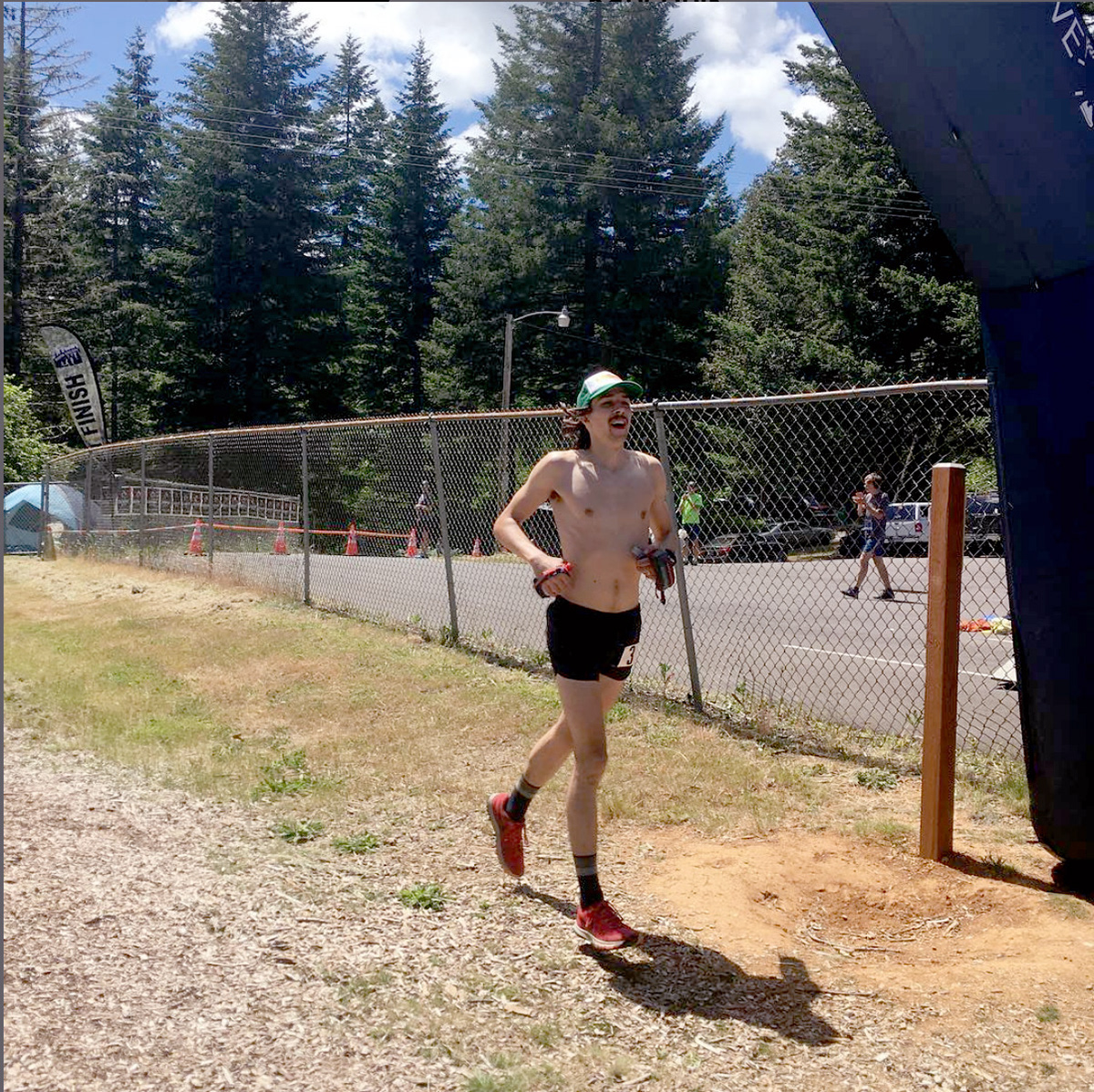
OCHOCO 50K
One of the coolest things to happen this year has been a developing friendship with Trevor Hostetler and Janessa Taylor. They are the race directors for Alpine Running, and I had the pleasure of working with them on promoting their Old Cascadia race through video and photography work. As one might guess, the Ochoco race series is also under their management. What made this race especially unique was that it was Katy’s first 50k. My friend Duncan Hoge was also running the 50 mile course on the same day. For me, I began the race somewhat tardy, as it started while I was still approaching the back of the pack whilst fussing with my waist belt. I was so mad at myself for being late, and took off in a sprint for the next five miles trying to catch up with the guys in front. When I finally did manage to get in step with them I was completely winded. They, on the other hand, were in casual conversation, namely Colton Gale and Matt Palilla. The remaining 25 miles were spent chasing these two, and we finished in this same order. I was honored to share the podium with these fast guys. It was also inspiring to see Duncan get the win for the 50 miler, and to witness Katy running farther than she ever had before, entering new territory and pushing through unforeseen challenges.
WALDO 100K
Having grown up in Oakridge I spent much of my summers at or around Waldo Lake, and so this is an area that feels like home. Since before my time as a trail runner this race has appealed to me. I wasn’t accepted upon my first attempt at the lottery last year, but this year I was. It would have been my A race had Mountain Lakes not been five weeks later. I am glad it wasn’t, however, because Duncan was also running it as his A race, and I honestly wanted him to win it. This posture of mine took a lot of pressure off me, but by no means did I go easy on the race. Ask Duncan himself and he will tell you that the pressure was in fact on him, from me. He and I ran the initial 25 miles together, then he peeled off in front. I couldn’t keep up, but I was never far behind him. From then on we would hold our positions, ultimately finishing 20 minutes apart.
Waldo is deserving of a full report, but I am instead going to leave you with three quick highlights about my experience before moving onto the big one: 1) Despite not winning the race, I did battle Duncan to the summit of Fuji Mountain and won, thus securing for myself a Waldo branded Patagonia puffy jacket. 2) A runner will typically taper their weekly mileage and intensity at least two weeks prior to a race. For Waldo I did the opposite. Due to training for Mountain Lakes, and life circumstance, I spent the days leading up to the race in the high Sierras, hiking over 40 miles with a ton of climbing, when I ought to have been resting. 3) I spooked a huge black bear (thankfully not the other way around) near mile 40 of the race. I was alone at this time, and the bear’s expression at discovering I was in the vicinity was comical. It acted as though it had been caught dipping its arm in the cookie jar, and took off running the other way.
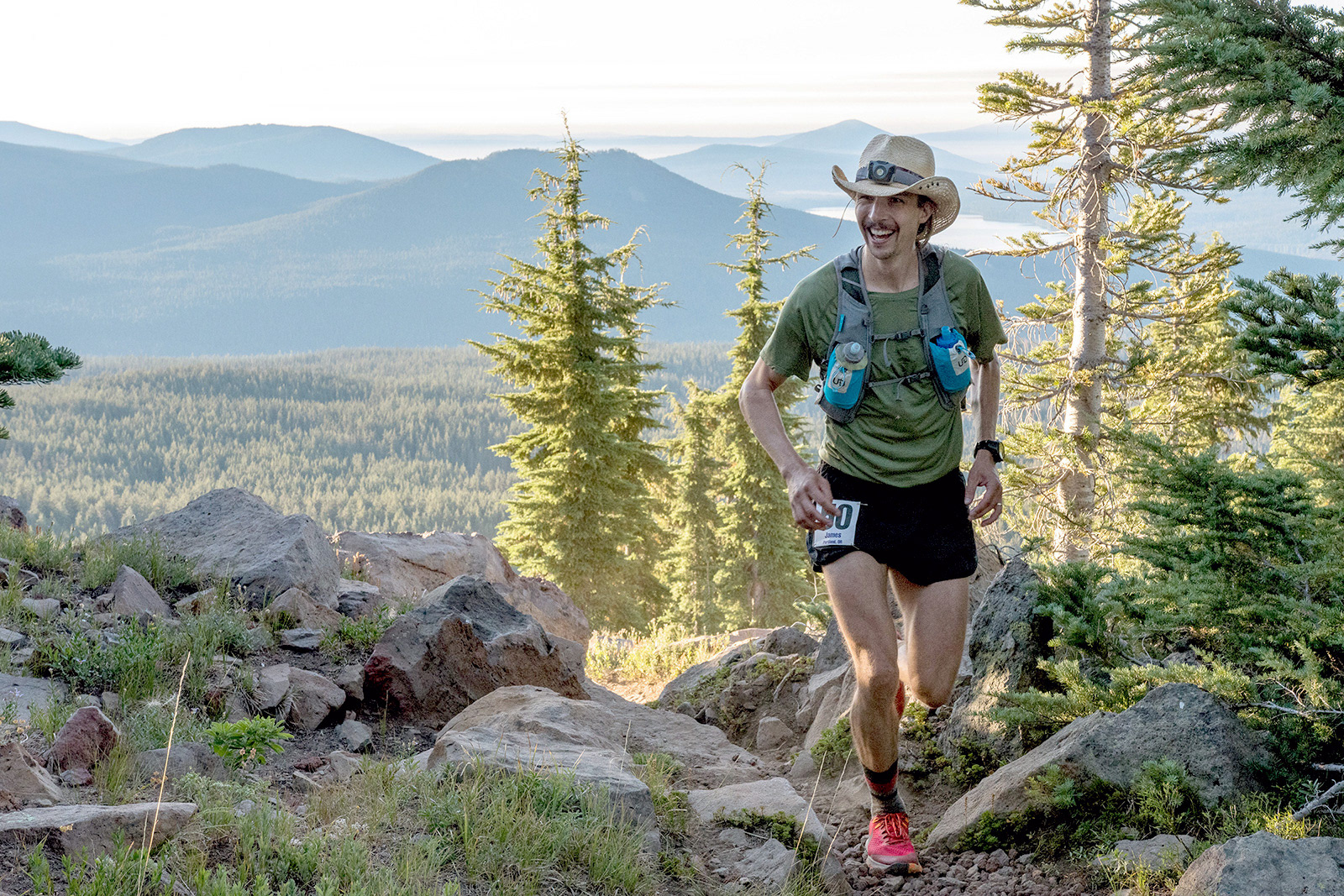

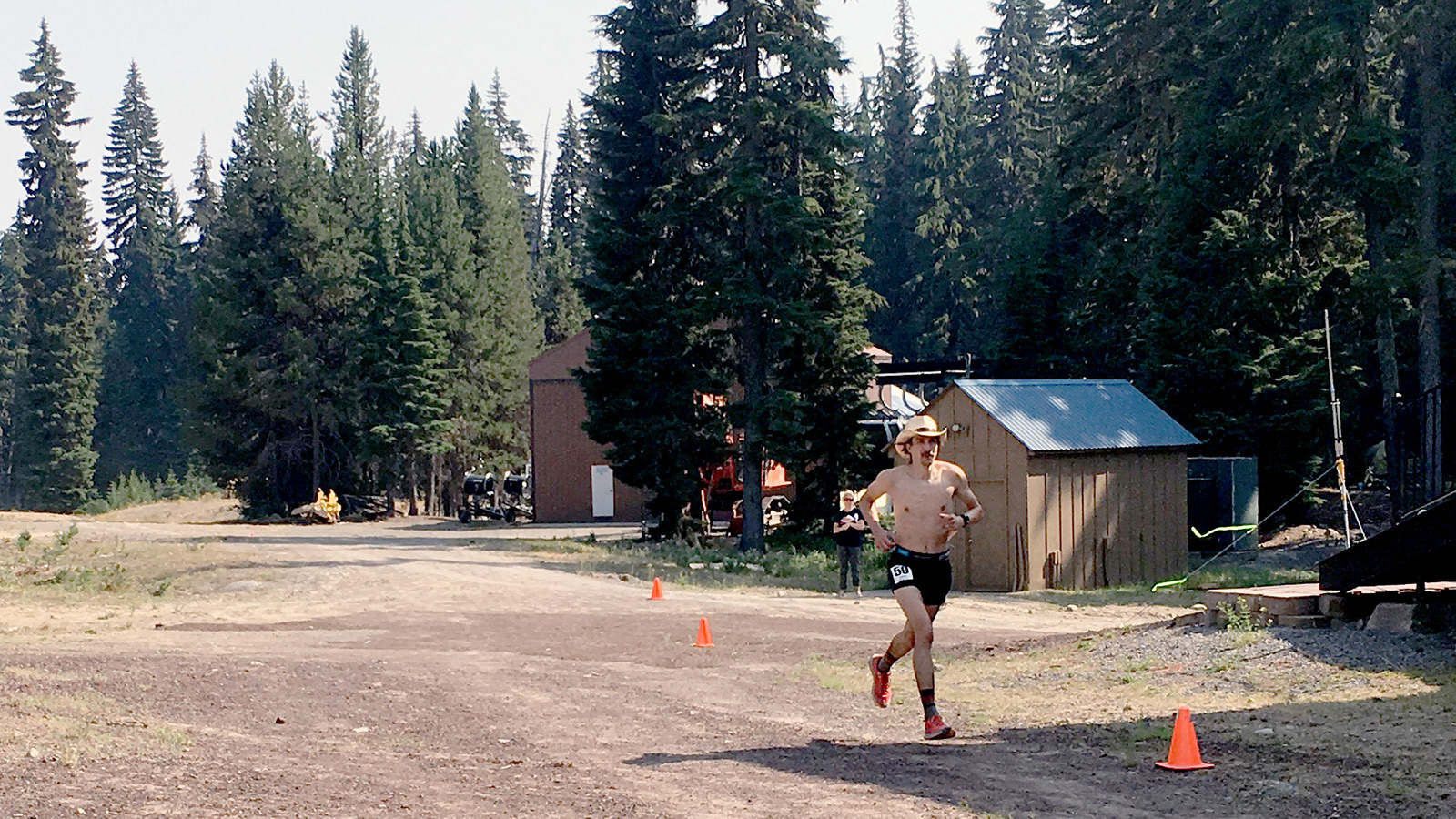
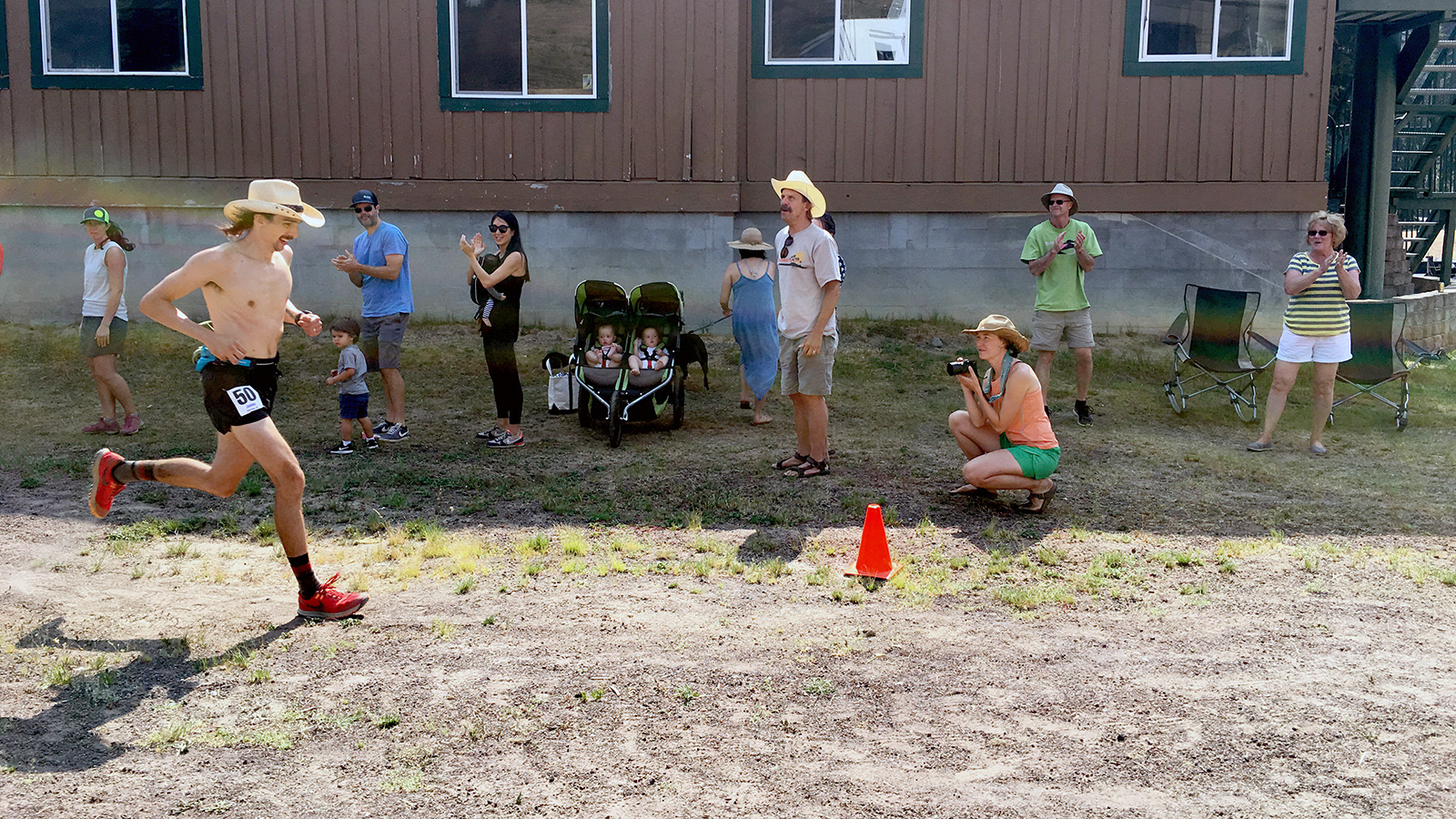
MOUNTAIN LAKES 100 MILE
THE COURSE:
This description is for those who upon reading my report have no concept of what the Mountain Lakes course is comprised of, or even where it is located. Those readers with a good sense of the area may wish to skip to the next section. Mountain Lakes spans a large stretch of the Pacific Crest Trail between Mount Jefferson and Mount Hood in Oregon. The start line is at Olallie lake, ten miles north of Mount Jefferson as the crow flies. From there it travels south and west in a loop-like fashion on a combination of jeep roads and complex trail systems, and over a mountain pass before returning to the start area. Once a runner completes this loop they are one quarter of the way through the race, or 26 of 100 miles, and continue north on a long stretch of the PCT over three mountain passes, mostly descending, before completing a 16 mile loop around Timothy Lake near Mount Hood. From there it’s another long, 30 mile journey southbound along the PCT mostly ascending the same three mountain passes from before, the largest of these known as the Pinheads, and through the night.
The adjacent image was taken during a scouting trip Katy and I had taken a few weeks prior to the race, and it features the first mountain pass prior to reaching the first aid station. This section would be inside of a windy raincloud come race day.
GOALS:
At the beginning, back in February, when I had barely completed the registration process for the year’s races to come, I set out with one ultimate goal: To end each race healthy and able bodied to continue running after the finish line. The only exception to meeting this goal was with Mountain Lakes itself, as it was my final race of the year, and I figured one hundred miles was enough to excuse the need for a few more. Additionally, it would be okay to end completely spent, given that the race season would then be over. I met this goal. Even at Yakima, despite the torn meniscus–that was ironically not caused by the race itself, but by stretching beforehand–I felt comfortable running an extra couple miles afterward (I wouldn’t have had I known my meniscus was torn at the time). Waldo, on the other hand, was admittedly a challenge, but there were still some miles left in my legs, proven by how well the following week’s training resumed.
The second goal was to remain positive, if not exuberant, and honestly this was less of a goal and more of a reality. It is hard for me to not feel lighthearted, or be filled with irrepressible jubilance while out in the settings where these races take place, and I only hoped that the race mentality itself wouldn’t override my inherent demeanor. I won’t go into further detail about this here, as it is a very personal field, but will quote the Mountain Lakes social media post in reference to me. It read, “If you were at Mountain Lakes 100 last weekend, you probably saw this smile. It didn’t seem to leave his face the whole race. @jamesholk was in the lead for much of the race but still took time to laugh and chat with the aid station volunteers. We heard that one even told him ‘You should probably get going.’”
It isn’t until we reach my third goal that competition arises. I wanted to win every 2018 race, if not establish new course records. The more ludicrous the ambition the better, because there is a very big part of who I am that thrives on the idea of challenging the impossible. Did I think this was a realistic goal? Sometimes. Was I filled with doubts about pulling it off? Usually. However, these thoughts and feelings weren’t hinderances to my pursuit of the goal, but interestingly enough rather fanned the flame all the more. This desire and goal came to fruition only once, and that one occurrence is more than I could hope for in many ways.
RACE DAY:
Come the morning of September 21, 2018 I found myself calm, relaxed and having just had a sound, full-night’s sleep. My breakfast routine was the same as for every race: A bowl of homemade granola, Nancy’s yogurt, blueberries, banana and a cup of coffee. This time I was sure to not overeat. My wife Katy and I read a chapter from the Bible, prayed, then proceeded to go on a brisk walk to warm up and do pre-race dynamic stretches. A Four minute countdown remained on the clock when I rounded the corner to the start line, and I felt a bit out of place as I looked upon so many eager, hardened faces, from the race director’s point of view, staring back at me. I quickly undressed my top layers, handed them to Katy, then squeezed in near the front lines. The timing was literally not one minute too soon, and with three to go before the countdown had struck eight o-clock things were underway. It started early!
A MARATHON:
Surprised as I was to be running all of a sudden, it felt good. So much energy, so much ambition pouring down the path in a unified direction. We started fast for a hundred miler, but my pace was where I wanted it based on prior research, and that happened to be with the front runners. The first three miles of jeep road eliminated the need to rush ahead with a subsequent fear of entering a bottle neck. Twenty-five minutes into the race the road came to an end, and there was now only one runner in front of me. I didn’t want to pass him for fear of feeling too much pressure as the lead runner so early in the race, but to my surprise he missed the trail marker when it turned to single track, and I quickly found myself unintentionally ahead of him. In some ways this was fine by me, as I had previously scouted the entire course and felt comfortable with the route, even if it didn’t have markers, but besides the aforementioned pressure I was now also burdened with absorbing every ounce of water clinging to the trail’s encroaching huckleberry bushes. My shoes were soaked through to the skin in a matter of seconds.
Little was said while we continued together through a dripping forest of misty fog and a windy, cold clouded mountain pass to the first of sixteen aid stations. As with every aid station to come, I forced myself to eat at least two solid items. This ritual usually consisted of eating a peanut butter and jelly mini sandwich, one piece of fruit, one salt tablet and refills for my two sixteen ounce soft flasks. First in, first out. The next six miles I knew to be a dangerously easy descent. Running it too fast would create a high risk of developing sore quads, thus ruining performance later in the race. A steady flow of runners were entering the aid station as I began my departure, which didn’t help me to stay calm, but frequent glances at my pace as recorded on my watch did keep me from going too fast. I ran alone for awhile before the previous runner caught up to me once more, and unlike before we began talking a bit more. Based on reviewing the entrants list prior to the race I figured his name was Jesse Booi, a strong runner from near Vancouver, Canada. When I asked, he told me his name was Ryan Shephard, coincidentally from the Vancouver area as well. Both of these Canadians would later prove themselves to be very humble, and very strong runners indeed.
Ryan and I again entered the second aid station together, and once more I was first to leave. To complete the initial loop, a marathon built into the first quarter of this ultra-marathon, required climbing a steep trail back to the start. Every bit of elevation we had just lost we now had the pleasure of regaining. I happen to love climbs, so this was where I figured I would create a gap, gaining some distance on the other runners. For some time I seemed to be right in this assessment. When I reached the fourth aid station, back at Olallie Lake where it had all began, I was met with abundant applause. Katy had everything I asked for ready to go, taking my trash and resupplying my pack with provisions for the thirty miles to come. I felt great. Second place then came barreling in, and it was no longer Ryan. It was like we were in a true NASCAR pit, and I remembered this was a race. As I sped off from the hustle and bustle Colton Gale, another runner I met during the Ochoco 50k, relayed a message from a friend of mine saying, “Go Strider!” Stage one was complete.
THE LONELY MIDDLE:
Leaving Olallie Lake northbound immediately places you on the Pacific Crest Trail. What was to follow were 30 miles of exclusive PCT travel through the Warm Springs Indian Reservation, eventually linking to the next major loop in the course, a circumnavigation of Timothy Lake. As I saw it, the remainder of the course was essentially broken up into a 50k, 25k and another 50k. I felt prepared for this. That was until the weather turned foul a second time. Rain fell at the temperature of snow, and while it did snow in some areas I only ever experienced sleet. Psychological pitfalls happen to just about every runner in just about every race, and it should’t surprise anyone that this would occur during a legitimate ultra, but I certainly didn’t expect it at mile 35. The bad weather teamed up with the solitude to beat me down, and my moral slipped into a dark place. However, because I knew this type of struggle would happen at some point in the race, I was prepared enough to press on, but my pace had undoubtedly slackened.
To no surprise of mine the runner who had come into Olallie just behind me soon caught up. It was Jesse Booi. Then to my surprise he hung around. We ran in tandem, each holding the front line off and on again, for the next five hours. Had he pressed on a little harder I likely would have continued down a demoralized path, but thanks be to him for pulling me out of that slump. Even so, it wasn’t easy. My tenacity and drive were fading. Holding to my sub-goal of simply getting to the point where my pacer Tyler Green would join me for the final 50k was just about all that held my focus somewhat in tact. There are two points along the Mountain Lakes course where your pacer can join you, both of which are at the same physical location, the Clackamas Ranger Station. This historic site also doubled as aid stations 9 and 12. I held to my original decision against having Tyler join me at the first juncture for two reasons, mostly because I wanted to go through the most difficult miles of a 100 mile race (traditionally considered to be between 60 and 70) alone, and also because I wanted a reward to look forward to once it got dark. Furthermore, unwise as it was, I decided to leave my headlamp at the Ranger Station while I raced the weaning daylight around Timothy Lake. The final miles were admittedly darker than I would have liked, but I made it through without much slowing. My return to the Clackamas Ranger Station was in the dark at 7:14pm, with 70 miles behind me. Up through this point I had held first place upon entering every aid station.
AN ULTRA MARATHON:
The scene in which I found myself at Clackamas Ranger Station ultimately left me in a state of confusion. To this point I was self-sufficient, knew what my next steps were when entering an aid station, and then was off to another stage of solitary running. Expecting to immediately see my crew, I instead found I was in a sea of strangers unable to discern faces or voices. After turning a few circles around and again in search of my drop bag I heard Katy’s voice calling out. It was a relief to see my family and friends, and Tyler looked 100 percent ready for the challenge that lay ahead of us. I refused to sit in the chair as I ate, changed my upper layers, and decided to keep wearing my damp shoes, since I remained blister free up to this point. This later proved to be the right choice, reenforcing my confidence in the Nike Kiger. Eight minutes elapsed, Jesse Booi had come and gone, and I had officially lingered too long. This would become an unfortunate trend until the final aid station.
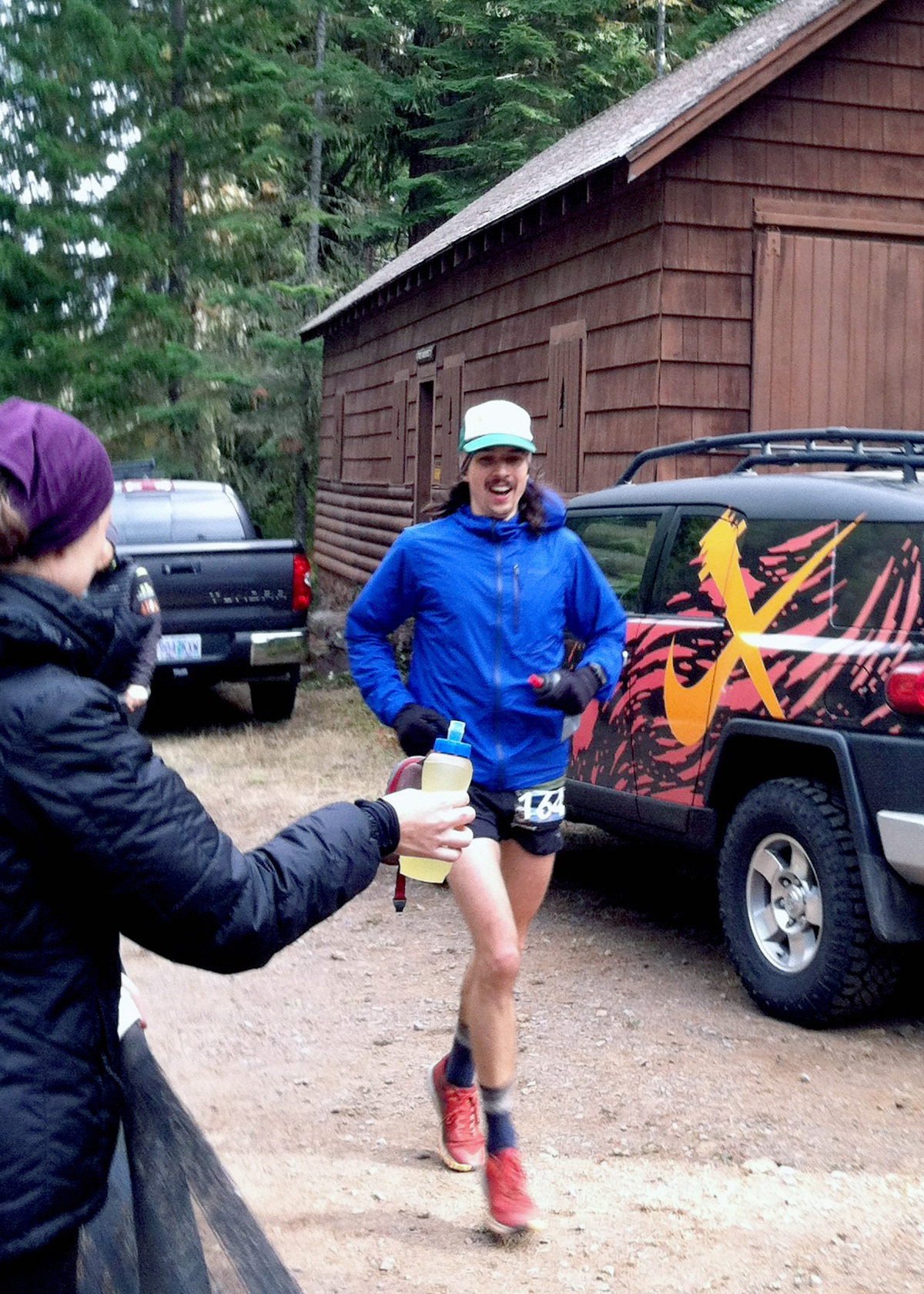
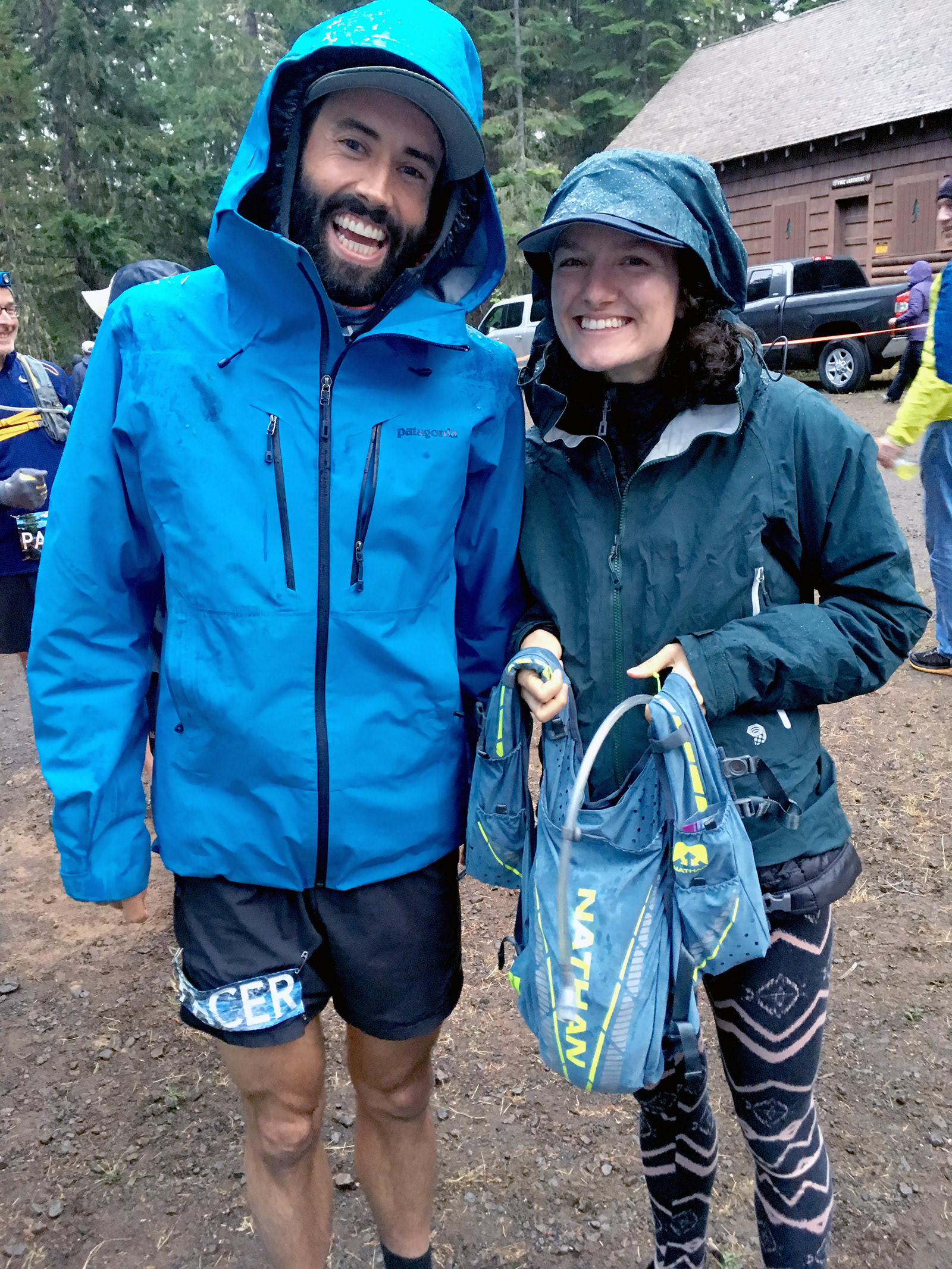
The journey south resumed after some strong encouragement from Tyler. Darkness now consumed our surroundings, and a mixture of approaching headlamps was all the more disorientating. Ryan Shephard soon passed me, then another runner, and while it was difficult to discern who they were at the time I knew I had fallen back to fourth place. My goals were rapidly diminishing. My moral remained high, however, as it was really only my competitive spirit that had begun to drift. This, in retrospect, has become the most interesting psychological aspect to my experience on the trails that night. For fifteen miles I ran slow, hiked periodically, and continually wondered if I could go a little harder if only I cared more. I still do wonder at this. I know I could have. It’s most fascinating to me, because I cannot say that this was my low point in the race. Mile 35 was. Yet I believe this proved the greater conflict to overcome, and that it will happen again in future races. My muscles were sore, knees were in pain, I was discouraged, and definitely exhausted, but the lack of endorphins were perhaps my biggest challenge. A heavy dose of sheer willpower and determination were in store.
Throwing in the towel was not an option due to the remote nature of the miles that followed, not that I really ever gave it a thought or wanted to. Regardless, the solution to ending the struggle was a simple enough task of keeping forward momentum until the finish line had been crossed. Tyler maintained a keen eye on my nutritional intake, often prompting me to continue eating as we ascended up and over the Pinheads climb. Entering the next aid station meant seeing the light at the end of the tunnel. Fifteen miles now remained. A few cups of broth, my nighttime substitute for the PB&J, had me feeling recharged, but yet another runner passed us by before we made our departure. It was Thomas Morgan with his pacer Ryan Kaiser. I was now in fifth place. For a brief moment I felt more discouraged than ever, because I no longer believed a podium finish was in reach, and that was essentially the last competitive goal to motivate my performance. Thankfully this feeling didn’t last. I set new goals, smaller goals. In a moment I decided I would run nonstop uphill to a road crossing I knew of some distance ahead, and it took every ounce of my strength to pull it off. To both my dismay and my delight I reached the road, but I had also caught up with Thomas and Kaiser. I couldn’t stop running now.
How I continued to run up that long climb I will never know, but I did. I did not stop running until I reached the finish line, and I ran hard. I didn’t have any of my original reasons to push the pace anymore, other than that I wanted to, because I honestly did not believe I would reach, nor pass the third place runner. More than anything I was motivated to see Katy once more. As I emerged from the PCT onto the final stretch of road to the finish there she was, joyously shouting in the dark. Ironically I didn’t stop to see her, but ran faster, harder. The sooner I completed this race the sooner I would truly get to be with her again. That was my goal. I nearly fainted at crossing the finish line, initially because of the effort, then because I was congratulated for making a podium finish. I didn’t believe it. For some time I continued in disbelief, but later realized Tyler and I had passed the third place runner at the Pinheads aid station unawares. My finish time was 17:26:49 at just past 1 am.
WOULD I DO IT AGAIN?
Yes. I love running, period. Racing 100 miles is absurd, and I cannot deny I am drawn to the experience. While I have taken the autumn season off from running to relax and regain strength, I would also be lying if I said I wasn’t thinking about the Cascade Crest 100 in Washington only one week after Mountain Lakes had ended. That said, some notable takeaways and lessons learned are as follows: 1) My feet remained blister free the entire time, despite their being wet, and having never changed socks or shoes. In fact I had no feet problems whatsoever. I am sure the Smart Wool socks were an added help in this. Thank you Teagen for developing an awesome shoe! 2) Never underestimate how close another runner may be, whether in front of or behind you. Had I been swifter in and out of the aid stations during the final 50k I could have had a shot at first place. 3) The timing of the Waldo 100k in relation to Mountain Lakes did seem to affect my performance. Proper training and proper tapering are worth paying careful attention to. 4) Don’t stop strength training as part of the overall training plan. 5) My nutrition was on point, but I still need to remember to eat more and more often. 6) It’s not as much for muscle soreness or exhaustion that willpower became a necessary component to finishing well, but for lack of endorphins or some other factor that caused me to become apathetic. This, to me at least, is a bit more of a complex problem that I want to be better prepared for when entering my next one hundred mile race.
Race photos within this report were taken by: Paul Nelson Photography, Katy Holk, Audra Terry Photography, Jeremy Provenzola, Trevor Lyden Photography, Teri Smith Photography and Ann Rogers. Thank you!
